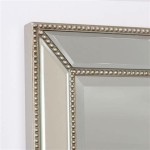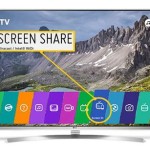How to Mirror a Screen Without a Smart TV
Mirroring a device's screen to a non-smart TV opens up opportunities for sharing content, presentations, and enjoying media on a larger display. Several methods achieve this, each utilizing different hardware and software configurations.
HDMI Cable Connection
A direct HDMI cable connection offers a reliable, high-quality mirroring solution. Most laptops, desktops, and mobile devices feature an HDMI port or support HDMI output via an adapter. Connecting an HDMI cable from the device to the TV instantly mirrors the device's display. This method bypasses the need for wireless networks and offers minimal latency, making it ideal for gaming and video playback. Users should ensure the TV input source is set to the corresponding HDMI port.
Wireless HDMI Transmitters and Receivers
For setups where a physical cable might be impractical, wireless HDMI transmitters and receivers provide a cable-free alternative. These devices consist of a transmitter connected to the source device's HDMI port and a receiver connected to the TV's HDMI port. They establish a direct wireless connection, transmitting audio and video signals. While generally more expensive than standard HDMI cables, they offer greater flexibility in room arrangement and eliminate cable clutter.
Using a Laptop as a Secondary Display
Some older laptops can function as secondary displays for other devices. This requires a video cable connection between the source device (e.g., another laptop, desktop) and the laptop acting as a monitor. Software configurations may be necessary to enable this functionality. This method is generally suitable for extending the desktop rather than pure mirroring and may require specific drivers or software depending on the operating systems involved. This approach offers a cost-effective solution if a secondary laptop is already available.
Casting Devices (e.g., Chromecast, Roku Streaming Stick+)
While primarily associated with smart TVs, casting devices can function with non-smart TVs equipped with HDMI ports. These devices connect to the TV's HDMI port and create a local Wi-Fi network. Compatible devices, such as smartphones, tablets, and laptops, can then "cast" their screens or specific applications to the casting device. This method often requires specific applications or browser extensions and relies on a stable Wi-Fi connection.
Miracast-Enabled Devices
Miracast is a wireless display standard that allows devices to connect and mirror screens directly. If both the source device (e.g., laptop, smartphone) and a Miracast adapter are compatible, users can connect wirelessly. The Miracast adapter plugs into the TV's HDMI port. This technology eliminates the need for a separate Wi-Fi network, creating a direct connection between the devices. Compatibility between devices is crucial for successful Miracast mirroring.
DLNA Streaming
DLNA (Digital Living Network Alliance) compatible devices can stream media content to a DLNA-certified media player or game console connected to the TV. This method does not mirror the entire screen but allows users to share photos, videos, and music. DLNA requires all devices to be connected to the same home network. Specific applications or software might be required on the source device to initiate and manage the streaming process.
Screen Mirroring Apps for Mobile Devices
Numerous applications available for smartphones and tablets facilitate screen mirroring to various devices, including some set-top boxes and game consoles connected to non-smart TVs. These applications typically require the TV-connected device and the mobile device to be on the same Wi-Fi network. This method allows for mirroring the entire mobile device screen or specific applications.
Considerations for Choosing a Method
Several factors influence the optimal mirroring method. Cable connections provide the most stable and highest quality connection, while wireless options offer greater convenience. Budget, compatibility between devices, and the specific content being mirrored should also be considered. Certain methods, like DLNA, are best suited for media streaming, while others, like direct HDMI or wireless HDMI, are better for activities requiring low latency, such as gaming.
Troubleshooting Common Mirroring Issues
Connectivity problems are a common source of mirroring difficulties. Ensuring devices are on the same network, using updated software and drivers, and checking cable connections can resolve many issues. Incompatibility between devices can also prevent successful mirroring. Consulting device documentation or manufacturer support resources can provide specific troubleshooting steps for specific hardware and software combinations.

How To Screen Mirror Iphone A Non Smart Tv

2024 Tutorial How To Mirror Phone Tv Without Wi Fi

How To Connect Phone Non Smart Tv Without Hdmi

A Guide To Screen Mirroring From Android Samsung Lg Sony And Roku Tvs Dignited

How To Mirror Android Screen Non Smart Tv Slashdigit

How To Mirror Phone On Non Smart Tv Chromecast Screen Mirroring Hindi

How To Mirror Iphone Tv Without Apple Airdroid

Screen Mirror To Samsung Tv Android Mac Ios Free App

How To Enable Screen Mirroring On A Samsung Galaxy Device

How To Mirror Phone Screen Without Wifi 4 Simplest Way Help








